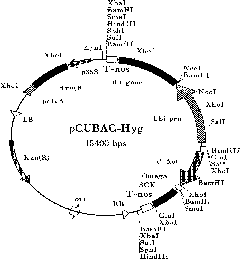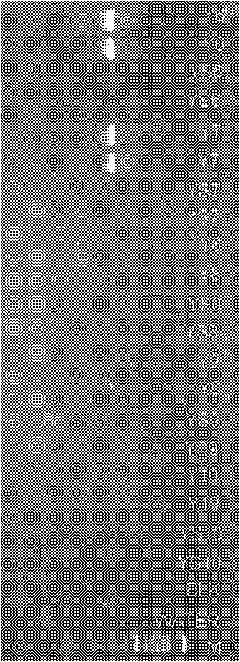Flanking sequence of transgenic rice Kefeng No. 6 and qualitative PCR detection method
A technology of transgenic rice and flanking sequences, which is used in the determination/inspection of microorganisms, biochemical equipment and methods, DNA/RNA fragments, etc.
- Summary
- Abstract
- Description
- Claims
- Application Information
AI Technical Summary
Problems solved by technology
Method used
Image
Examples
Embodiment 1
[0028] Example 1: Cloning of flanking sequences of transgenic rice line Kefeng No. 6 exogenous insertion vector
[0029] 1. Experimental materials
[0030] 1. Plant material: transgenic rice Kefeng 6 and its receptor variety Minghui 86, provided by Fujian Academy of Agricultural Sciences;
[0031] 2. Reagents: Taq DNA polymerase, 10×PCR Buffer (100mM Tris-HCl pH8.3, 500mMKCl, 15mM MgCl 2), dNTP were purchased from Treasure Bioengineering Dalian Co., Ltd.; 100bp ladder DNA Marker was purchased from Beijing Quanshijin Biotechnology Co., Ltd. PCR product purification kit (Cat.NO.SK1141) and PCR product cloning kit (Cat.NO.SK2213) were purchased from Shanghai Sangon Bioengineering Co., Ltd. Primer synthesis and clone sequencing were completed by Invitrogen. Other biochemical reagents are imported subpackages or domestic analytical pure.
[0032] 3. Experimental instrument: PCR amplification instrument: PTC-200 (produced by Bio-Rad)
[0033] Biological spectrophotometer 6131 (...
Embodiment 2
[0054] Example 2: Line-specific qualitative PCR detection based on two exogenous insertion flanking sequences of the transgenic rice line Kefeng 6
[0055] 1. Experimental materials: transgenic rice line Kefeng 6 and its derivative variety II Youkefeng 6 were provided by Fujian Academy of Agricultural Sciences; other transgenic rice Huahui 1 and Bt63 were provided by Huazhong Agricultural University; The non-transgenic rice pairs Zhaominghui 86 and II Youming 86 were provided by Fujian Academy of Agricultural Sciences, Xianyou 63 was provided by Huazhong Agricultural University, and Xianyou 10 was provided by Zhejiang University. The enzymes and reagents used in the experiment are the same as in Example 1.
[0056] 2. Experimental process and methods:
[0057] 1. Extraction and detection of DNA: same as Example 1.
[0058] 2. Specific detection based on two different insertion sites: According to the two sequences determined in Example 1, two pairs of PCR primers were design...
Embodiment 3
[0064] Example 3: Sensitive detection of strain-specific detection
[0065] 1. Experimental materials: transgenic rice line Kefeng 6 and control recipient variety Minghui 86. The enzymes and reagents used in the experiment are the same as in Example 1.
[0066] 2. Experimental process and methods:
[0067] 1. Extraction and detection of DNA. After grinding the seeds of Kefeng 6 and its non-transgenic control recipient Minghui 86 into powder, a series of mixed samples were prepared. The content of Kefeng 6 in each sample was 10% and 5.0% respectively. , 2.5%, 1.25%, 0.5%, 0.1%, 0.05% and 0.01% (W / W), after mixing, the DNA extraction method is the same as in Example 1.
[0068] 2. Sensitivity detection based on two different insertion sites: the primers used are shown in Table 4, and the PCR reaction system is 1×PCR buffer, 200umol / L dNTP, 0.2umol / L specific primer, and 0.025U / uLTaq enzyme. The reaction program was 95°C, 5min; 35 cycles of 94°C for 30s, 59°C for 45s, and 72°C...
PUM
 Login to View More
Login to View More Abstract
Description
Claims
Application Information
 Login to View More
Login to View More - R&D
- Intellectual Property
- Life Sciences
- Materials
- Tech Scout
- Unparalleled Data Quality
- Higher Quality Content
- 60% Fewer Hallucinations
Browse by: Latest US Patents, China's latest patents, Technical Efficacy Thesaurus, Application Domain, Technology Topic, Popular Technical Reports.
© 2025 PatSnap. All rights reserved.Legal|Privacy policy|Modern Slavery Act Transparency Statement|Sitemap|About US| Contact US: help@patsnap.com



